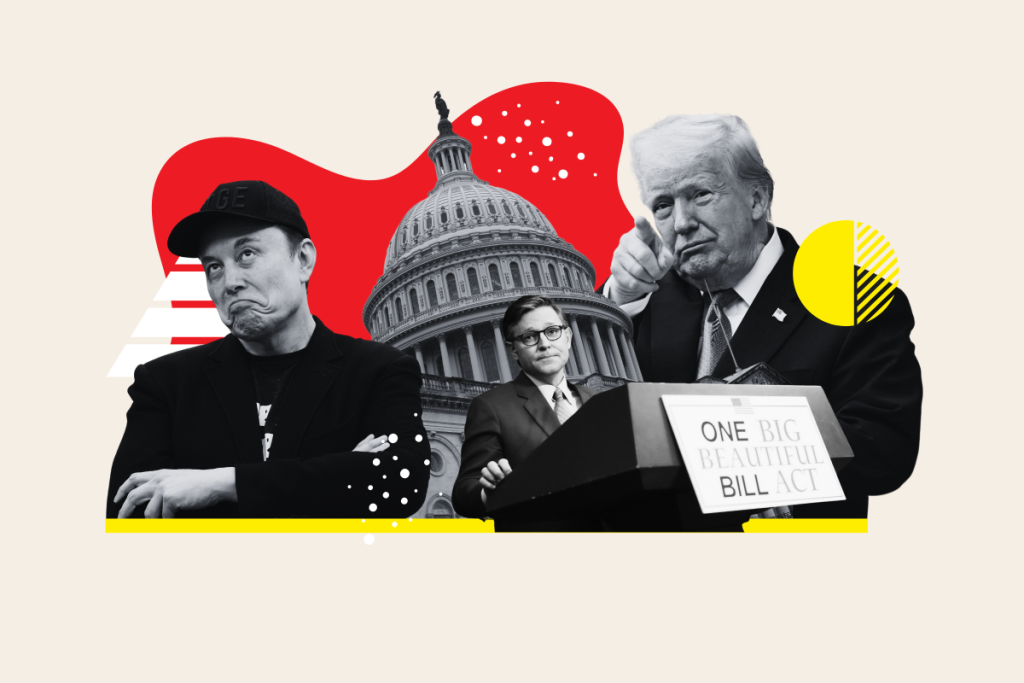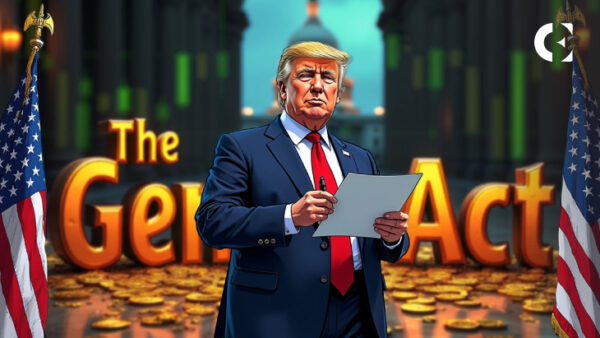One Big, Beautiful Bill What is it?
The phrase “One Big, Beautiful Bill” does not actually represent a single bill, but a comprehensive reform package that encompasses several interrelated regulations. It combines three separate bills on digital asset regulation, tax reform and financial regulatory simplification. These include the FIT21 Act, which includes the delegation of authority for token classification, the GENIUS Act, which provides a comprehensive framework for stablecoins, and the Keep Innovation in America Act, which provides tax exemptions for microtransactions. Therefore, the law can technically be considered as a comprehensive and strategic regulatory move that combines these three regulatory steps.
A Bill in the Midst of Political Tension
However, the bill set the agenda not only with its technical content but also with the political debates it brought with it. As it will be remembered, this law, which was also cited as the source of the tension between Elon Musk and Donald Trump, increased its impact on public opinion with the debate between the two. Musk harshly criticized the bill, describing it as a “debt slavery bill”, while Trump responded by bringing up the subsidies Musk’s companies receive from the state and saying that “he opposes the bill because he cannot benefit from the incentives and tax breaks he receives from the state”. These debates have shown that the bill is part of a power struggle that is not only economic, but also political.
Source: cryptorank
In light of all these developments, cryptocurrency regulations, one of the most striking aspects of the draft law, is of particular importance for the markets. Especially for crypto investors and entrepreneurs seeking regulatory clarity, this law could be a potential turning point. We will take a look at the importance of this bill for the cryptocurrency markets and offer a perspective on its possible consequences.
Crypto Content and Possible Impacts of the Bill
First of all, the bill aims to clarify how cryptocurrencies will be classified. Currently, many tokens in the US are evaluated in a gray area with the question of whether they are securities or commodities. This has led to lawsuits between the SEC and many crypto companies. The new bill limits the powers of the SEC to eliminate this uncertainty and largely empowers the CFTC (Commodity Futures Trading Commission) in this area. In other words, we can assume that crypto-side supervision will now be handled from a different perspective.
Comparative Overview
| SUBJECT | CURRENT SITUATION | SITUATION ENVISAGED BY THE LAW |
|---|---|---|
| Regulator | SEC uncertain, investor confidence can be broken. | CFTC clear center; token classification gains clarity. |
| Stabilcoin Regulation | Legal gaps, lack of trust. | Transparent issuance with full reserve coverage. |
| Transaction Tax | Transactions under $200 are taxed. | Micro-payments are exempt from tax. |
There are also important steps on the stablecoin side. In particular, the ability of non-bank institutions to issue regulated stablecoins can bring dynamism to the sector. We can consider this as a critical development for US-based projects to grow on a safer ground and get ahead in the global stablecoin competition.
The cryptocurrency market has been struggling with regulatory uncertainties for a long time. Especially in a country like the US, which is the center of global finance, the lack of a legal framework or the existence of Gray areas caused anxiety in the eyes of both investors and developers. The regulations under the “One Big, Beautiful Bill” have the potential to change this picture significantly.
The outlook for crypto entrepreneurs is also positive. US-based projects in particular will now know which agency they are affiliated with, which laws they will operate under, and how they will ensure transparency. This could provide a much more professional grounding for new projects in the funding, launch and exchange listing processes.
In terms of market dynamics, the impact of such regulations may not be direct, but they create strong signals in terms of expectation pricing. As a matter of fact, it was seen that some major cryptocurrencies reacted upwards in the short term after the bill was passed by the Parliament. But whether the move becomes permanent will depend on how the regulations are implemented and how the approval process proceeds in Congress.
Source: cryptorank
Main Regulations Introduced by the GENIUS Act:
| REGULATION TITLE | EXPLANATION |
|---|---|
| License Requirement | Non-bank entities wishing to issue stablecoins must obtain a PPSI (Payment Stablecoin Issuer) license at the federal level. |
| Full Reserve Requirement | Each stablecoin must be backed 1:1 by cash USD or short-term Treasury bonds. “Algorithmic” stablecoins are excluded. |
| Monthly Transparency Report | Issuers must disclose their reserve composition every month. Reports should be subject to independent audit. |
| BSA and AML Compliance Obligation | Issuers are obliged to ensure full compliance with anti-money laundering procedures under the Bank Secrecy Act. |
| Federal Supervision | Issuers will be supervised by institutions like the Federal Reserve or the OCC. This was added to reduce systemic risks. |
In light of all this information and data, we can interpret the bill as follows: This law should be read as a move to reconstruct the future of the American financial system. For cryptocurrency market players and developers, it should not be difficult to infer that this means a more predictable, transparent and secure playing field in the long run.
Disclaimer
The information provided in this article is for general informational purposes only and does not constitute legal, financial, or investment advice. The views and opinions expressed are based on publicly available sources and do not necessarily reflect those of Darkex. Always consult a licensed professional before making financial decisions.






